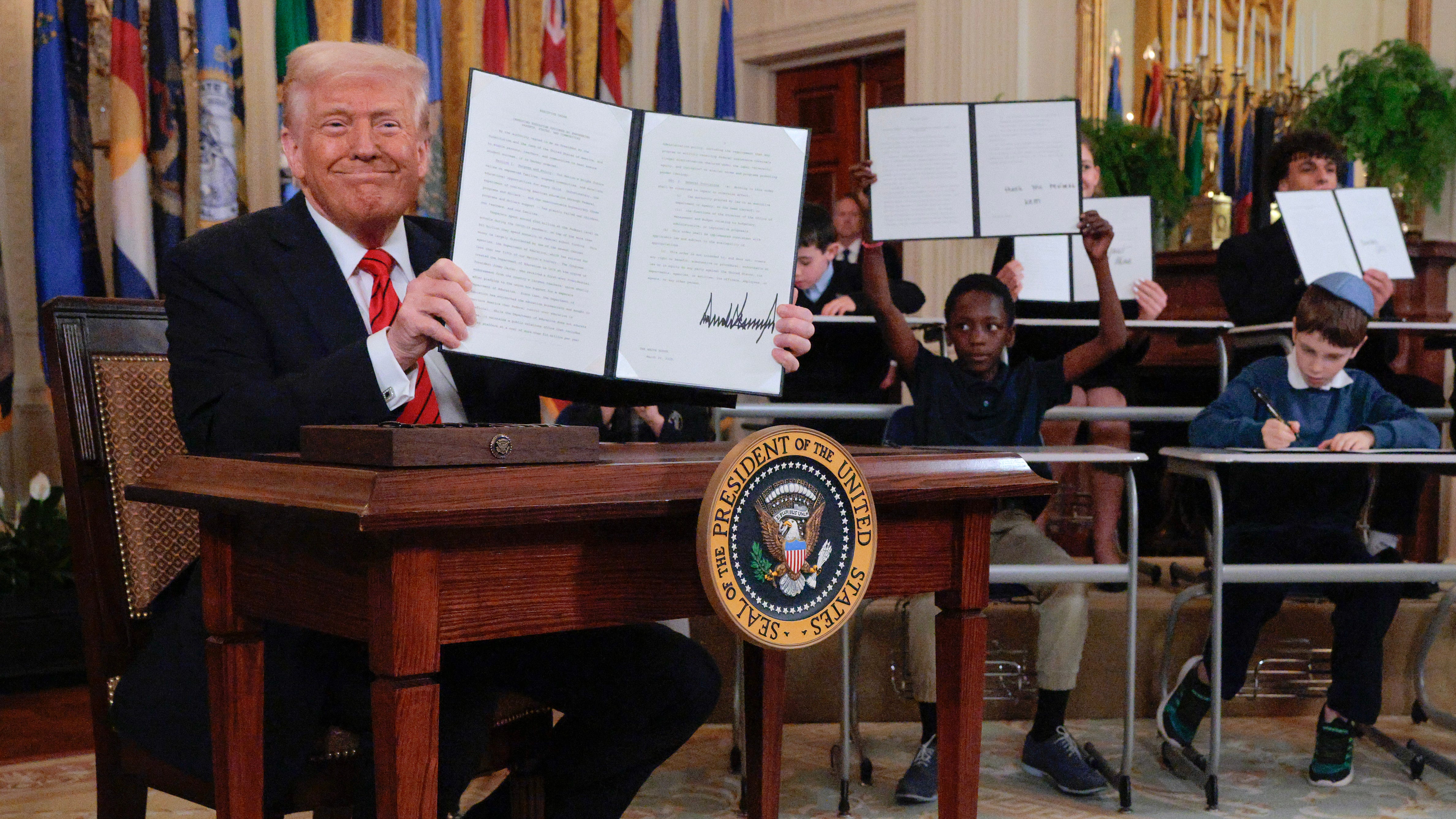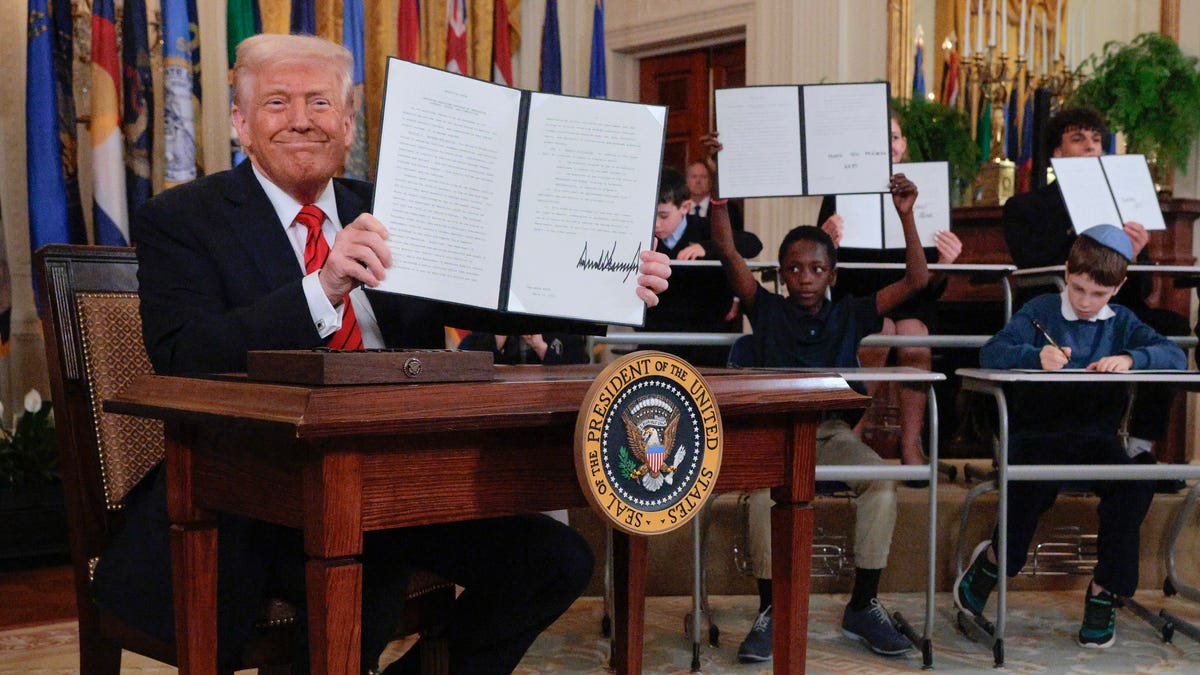
SCOTUS backs Trump plan to fire Education Dept. workers
A divided Supreme Court backed Trump’s plan to dismantle the Education Dept. and fire hundreds of federal workers, despite a judge’s earlier pause.
- Southwest Ohio districts didn’t receive at least hundreds of thousands of anticipated federal funds.
- President Donald Trump’s Department of Education froze the funds, pending a review.
- The funds support English language learners, teacher quality, student instruction and adult education.
- Districts in Greater Cincinnati are encouraging lawmakers to release these funds.
School officials in southwest Ohio are “deeply concerned” after their districts didn’t receive at least hundreds of thousands of anticipated federal dollars.
On June 30, the U.S. Department of Education informed states that it wouldn’t release about $6.2 billion across five federal programs, including money for English language learners, pending a review. The department did not provide a timeline.
The decision trickled down to districts in Greater Cincinnati, which are encouraging lawmakers to release the funds.
“Like many school districts across the nation, Princeton City Schools is deeply concerned about the delay in the release of critical federal education funds,” district superintendent G. Elgin Card said in a statement. “Funding cuts will directly impact our gifted students, as well as additional support for our most vulnerable students.”
The Department of Education said in a statement the review is due to the change in administrations and that the department “remains committed to ensuring taxpayer resources are spent in accordance with (President Donald Trump’s) priorities.”
Congress previously approved these funds, district officials said. Typically, districts learn the amount of funds they will receive in June, and the state gives them permission to start spending by July 1.
Southwest Ohio districts said the delay makes it difficult for schools to plan for the upcoming school year.
“We were taken by surprise,” said Adam Cooper, English Language Acquisition & Access Manager at Cincinnati Public Schools. Especially, he said, because the funds were already approved by Congress.
“We have existing contracts, we have partial salaries, we have resources that we’ve already worked with,” Cooper said, “and now, all of a sudden, with very little notice left, we’re without all that we had planned on.”
Cincinnati Public Schools board member Ben Lindy described the freezing as “completely lawless” during a public meeting July 9.
Frozen funds important for improving absenteeism, graduation rates among English learners
One of the grant programs, Title III-Part A, provides money to support English learners. In Greater Cincinnati, 16 schools have student populations with one-third or more non-native English speakers.
Most of these schools are within two districts: Princeton City Schools and Cincinnati Public Schools.
Districts that receive these funds are also in charge of distributing money to private and parochial schools with English learners within the district boundaries.
The funds can be used for instructional materials that supplement the general education for English learners. They can also be used to train general teachers who don’t have experience teaching English learners in their classroom, said Adam Cooper, English Language Acquisition & Access Manager at Cincinnati Public Schools.
Title funds can also be used to pay family engagement coordinators who work with families of English learners to help them understand expectations of school in the United States. Their work, Cooper said, is critical for improving graduation rates and decreasing absenteeism rates in the district.
Although the English learner funds are politically controversial, the actual amount Cincinnati Public Schools receives is relatively small.
Cincinnati Public Schools receives less than $1 million dollars in Title III-A funds. This is a “tiny sliver” of what the district spends on its English learners, assistant treasurer Michael Gustin said.
The funds are still helpful, he said.
However, he is especially concerned about some of the other grants. The other funds in review include money for improving teacher quality and well-rounded instruction for students, Gustin said.
One of the grants under review is for adult education. “They’re going back to get their high school diploma, which, in this environment is a huge thing,” Gustin said, “as we’re trying to get people to grow the workforce.”
Although Gustin said Title III is probably the smallest of the grants under review for his district, this is not the case for Princeton City Schools.
In 2024-2025, Princeton City School District received roughly $240,000 in funding for professional development, $210,000 in funding for English learner services and $140,000 in funding for STEM Summer School, field trips and curriculum experiences for students, the district said in a statement.
District officials said English language learner funds could be eliminated entirely
Gustin is also concerned about the possible elimination of Title III-A funds from the federal government in the next fiscal year. He said that based on the early budget process for fiscal year 2027, there are signs Congress could eliminate these English learner funds.
Cincinnati Public School officials fear the impact this would have on graduation and absenteeism rates. “It has an impact on the type of student that is sitting in front of us, whether they’re ready to learn, or they’re dealing with a host of other stressors.” He added the loss of funds would also impact people’s salaries.
If these funds aren’t available in the future, Cincinnati Public Schools will have to reassess its services and make more budget cuts. Gustin said the district will not get rid of English language services.
“We have a legal and moral obligation,” he said, “to provide services to these kids.”






